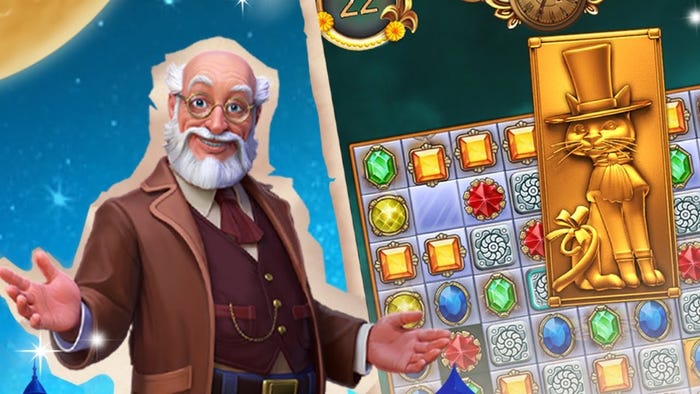
Featured Blog | This community-written post highlights the best of what the game industry has to offer. Read more like it on the Game Developer Blogs.
What game writers can learn from Mad Max: Fury Road
Game writers can learn a lot from Fury Road, because despite having nothing to do with games, it’s one of the best examples of game-like storytelling I’ve seen in a long time

This post first appeared on Shindig. It contains spoilers for Mad Max: Fury Road.
To say that Mad Max: Fury Road has shaken up the pop cultural sphere would be an understatement. Here is a film that is a blatant, unapologetic summer (or winter, depending on where you’re from) blockbuster, and yet has sparked so much interesting philosophical, sociological discussion. While we’re talking about how exciting the almost non-stop action is, we’re also discussing the state of women in film, and in action films in particular. While we’re gushing over the guitar flamethrower and outrageous vehicles, we’re talking about themes of non-violence, hope, and compassion.
I’m not going to write about Fury Road’s portrayals of women, of fatness, and of disability. Of its restraint despite being so bombastic, and of its fundamental, life-affirming nature despite a body count typical of action films. Of its theological underpinnings and its central theme of objectification. These are all important topics worth discussing, without a doubt - but there are far more qualified people out there doing a far better job with these than I ever could.
Instead, I’m going to talk about what I do know - stories and video games. Because, despite Fury Road having nothing to do with games (there’s a Mad Max game due out later this year, but there’s no direct relation to Fury Road or any other film), it’s one of the best examples of video game storytelling I’ve seen in a long time.

It’s easy to imagine Fury Road as a video game. The film is essentially one long car chase, with sparse dialogue and almost non-existent exposition. Action - what is happening right now, in this moment - is at the core of Fury Road. Make the War Rig a game object controlled by a player and the other vehicles AI-controlled enemies, and you could turn the whole film into a game, almost shot-for-shot.
And yet, as so many others have pointed out, part of what makes Fury Road so good is its story, characterization, and the themes it explores. In lieu of a wordy script and over-explaining itself, Fury Road leaves most of its storytelling to context and subtext. It’s that old but always relevant adage - show, don’t tell.
The film gives us little to no backstory for Max, Furiosa, Nux, Immortan Joe, the Wives, the Vuvalini, or even the world itself. But through their actions, we learn about what motivates and defines these characters.
All we’re told about Max is that he’s an ex-cop who, once upon a time, failed to save someone dear to him - a young girl, perhaps a daughter, judging from a few brief hallucinations. The specifics of that event don’t matter; it’s in Max’s unerring efforts to help Furiosa and the Wives that we come to know his character, and how those events affected him. We learn that he’s seeking atonement for his perceived sins - his failure to save someone.

The same is true of Furiosa - she states outright that she’s seeking redemption, but doesn’t specify for what. Again, these are details that don’t matter. What does matter is how her past has motivated her, which comes across through her determination to get the wives to safety. It comes across in the contrast between the fury she has for her enemies and the compassion she shows for the Wives and, eventually, Max.
Perhaps most of all, it’s the worldbuilding that makes Fury Road’s storytelling so successful. It could easily be argued that the lead character is neither Max nor Furiosa, but the Wasteland itself. How the world got into the state it’s in is only briefly touched on, but the look and feel of the Wasteland, and how it interacts with its people, gives it context and meaning. The tall, slightly grassy peaks of the Citadel sit in contrast to the dry, bleak desert below it, and the desperation with which the emaciated gather under Immortan Joe’s post, waiting for a drop of water, tells us everything we need to know about social climate and the hierarchy.
But even in the Citadel, people are struggling. The use of Max as a “blood bag” for the War Boys, and shots of everyone from the nameless hordes below to Joe himself with various disfigurements and disabilities paint a picture of a world that’s sick and dying. It’s mentioned briefly in the introduction that this is the result of nuclear warfare, but it’s this imagery that transforms that from a simple statement into something that we can feel.

Video game writers could - and should - pay attention. Games are, by their nature, interactive, and so their stories work best when they complement that interactivity. Instead, a lot of games - big budget, blockbuster games - are becoming increasingly filmic, with high production values, big name actors, and lots and lots of cutscenes. Cutscenes aren’t inherently bad, but they turn the audience into passive observers instead of active participants. They create a sense of separation between the narrative element and gameplay, as though they’re two discrete, unrelated aspects of the game.
Fury Road offers a roadmap to a more holistic kind of narrative, one where cutscenes aren’t needed because instead the focus is on showing a story instead of telling it. One where what isn’t said is as important as what is.
Games can impart narrative through world design and the players’ interactions with the gamespace in the same way that Fury Road imparts its story through world design and the characters’ interactions with each scene. Instead of stopping for a cutscene to tell you what’s going on, a game’s story can be built around and through the actions of the player, in the same way that Fury Road’s is built around and through the high-octane, non-stop action of that film.

Game writers and designers, pay attention. You don’t need to have “story”, “gameplay”, and “visuals” as separate components; they can - and most of the time, probably should - be one and the same. Fury Road is a perfect example of how tell a compelling story in a game in a way that makes it part of the game, and not just something that frames the action.
And really, do you need an excuse to go see Fury Road again?
Read more about:
Featured BlogsAbout the Author(s)
You May Also Like








